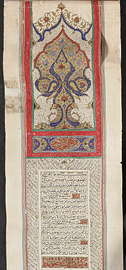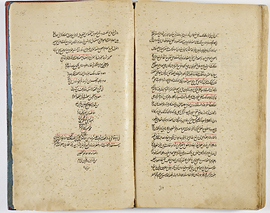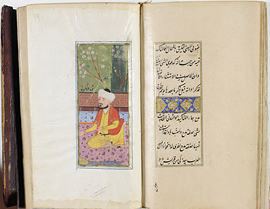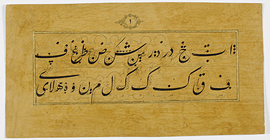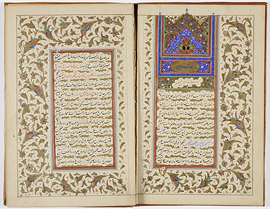“The heart is a mine, the intellect a precious mineral, the tongue a miner, the calamus a goldsmith, and the handwriting, a finished piece of jewelry.”4 Although Arabic script was originally very unrefined, devoid even of diacritical points and vowel marks, it developed very quickly and became a delight for the eye of the beholder. The first letter, alif ( ا), is the most important letter of the alphabet, and in the alpha-numerical system (abjad) it represents number 1. Unlike all the other letters of the Arabic alphabet, which are treated as being of feminine gender, the word alif can be either feminine or masculine. Furthermore, like some of the other letters of the alphabet, its anatomy mimics human/animal anatomy. Thus, it is spoken of as having a head, nape, forehead, face, belly, groin, hips, knee, and tail. This association with the human/animal body is also clearly visible in the description of the alif in thuluth script as “a figure of a man looking at his feet”. The alif and other letters with ascending upstrokes often have protruding strokes at their heads. Some look like barbs and others almost like a short beak on a bird. These are called headserifs and are of fundamental importance in the palaeographical analysis of bookhands. Of great importance for palaeographers also are the various shapes of sub-linear strokes, hairlines, and squiggles. The second most important letter is actually a ligature, the lām alif ( ), regarded in the manuscript age as the 29th letter of the Arabic alphabet, and traditionally placed before the letter yāʾ in this sequence. In the proportioned scripts of the Islamic East this ligature has three distinct varieties. The most popular is the “lām alif of the scribes” (al-warrāqīyah) with its triangular base. In the Maghreb, however, the number of possible forms of this letter is much greater: upwards of 16 distinct shapes
4 Bishr al-Muʿtamir (d.825).

